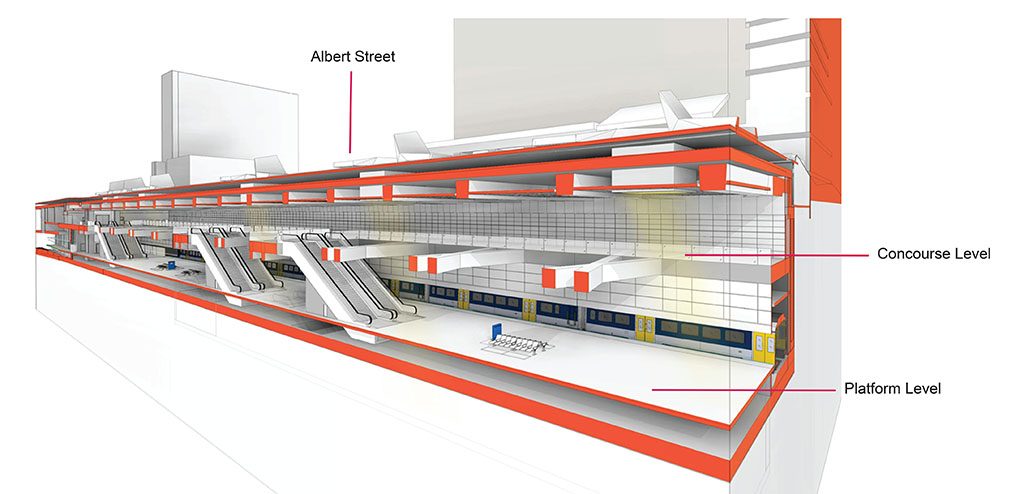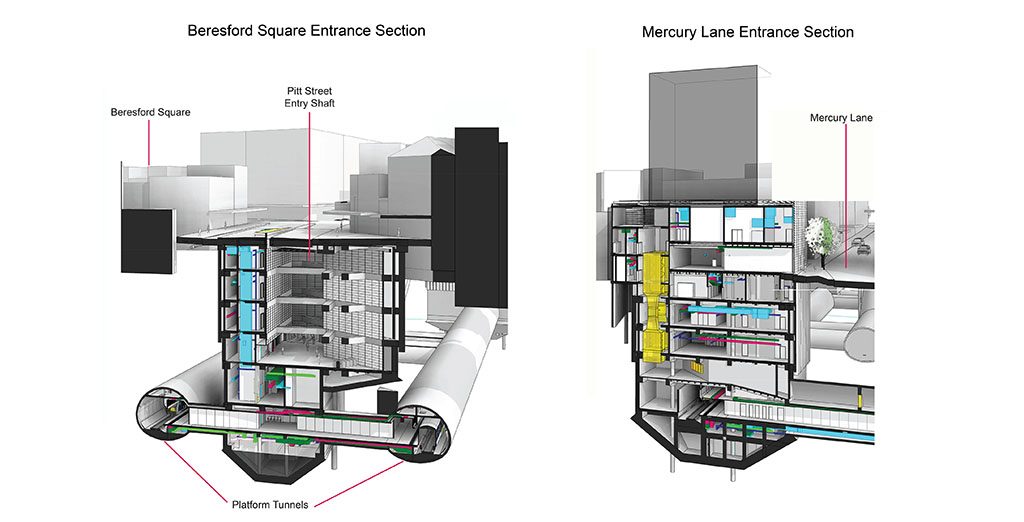The city of Auckland, home to the world’s largest Polynesian population and known to the Maori as Tamaki Makaurau, is the biggest in New Zealand. Currently about the same size as Birmingham in the UK, it has a population of about 1.4 million occupying an urban area of almost 426 square miles.
Like London, Auckland is growing at a great rate, and is suffering from property inflation and serious congestion on its transport systems. The projected population growth in the next 30 years is 700,000 and, whilst its numbers currently constitute some 31% of the population of the islands of New Zealand, this anticipated growth is expected to take it up to 40%.
The transport congestion already mentioned has the usual consequences; lost time, costs to the economy and so on. Worse, New Zealand as a whole has a poor transport accident rate, reckoned on some measures to be double the UK’s and double that of Australia. The death toll on the roads was 309 in the 12 months up to 2015, in a country of just four million people. New Zealand’s fatal road accident rate per 100,000 population is 7.4, over double the UK rate of 3.5, according to the World Health Organisation’s Global Status on Road Safety report (2012).
Although many accidents are out in the countryside, the roads of Auckland contribute significantly and, whilst not the worst, Auckland region had the third highest road death rate in the country. Each fatality has been estimated to have a ‘value of life’ cost of some $4 million (approximately £2 million pounds).
The Government and the City of Auckland have not been idle, and much has been done already to alleviate the intensity of road traffic in the city. In particular, the Developing Auckland’s Rail Transport (DART) scheme is now approaching completion and there has been significant progress to date introducing dedicated busways and bus lanes plus a cycle network.
Electrification and modernisation
DART has encompassed a wide range of improvements to the Auckland rail system. Like very nearly the entire rail network in New Zealand outside of Wellington, the city’s railways were mostly about freight and consisted largely of single lines with passing loops. Passenger services were relatively infrequent, and the layout and signalling permitted only limited increases in services.
Diesel traction, including General Motors locomotives from the 60s and 70s and converted early 1970s Mk2 UK coaching stock, was being used to run the trains. There were also a number of stainless steel DMUs, also second hand (from Perth, Western Australia), which ranged in age from the late 1960s to the mid-1980s. Ten of these DMUs will be retained for the currently non- electrified Papakura to Pukekohe service in the south of Auckland.
As a first step, DART resignalled the network to modern standards with Westrace 2 interlocking and associated equipment to ETCS Level 1 by 2011.This is controlled by KiwiRail from the National Train Control Centre in Wellington station. The capability is there to upgrade to ETCS Level 2 when required with the potential to add ATO as on the Thameslink route.
The system is being electrified, essentially to British Rail Mk3 standards, using gantries and masts produced by Eastbridge of Napier, North Island. That work is substantially completed with power switched on all electrified routes and full electrification of the urban network is due to be achieved by July 2015.
Significant sections of the urban system have been doubled to give full twin-track in the busiest areas. Some stations, such as Grafton (which serves Auckland University, medical school, hospital and schools), have been upgraded and work is continuing to create transport hubs at key locations around the city where bus services will link with the trains. The strategy is to reduce the number of buses going into the city centre, instead making the main priority for them the feeding of passengers from the suburban hinterland of the city into bus/rail interchange hubs such as those at New Lynn and Panmure, which have been built in the last few years, and those still not yet complete at Otahuhu and elsewhere.
Whilst all this was going on, 57 new three-car EMU trains were procured, with the order going to CAF in Catalonia, Spain. Deliveries of the new units began in 2013 and, along with completion of the electrification works, will permit commencement of the planned full-electric suburban services this July. Later in the year, after the new systems have bedded down, an accelerated timetable will come into operation. The diesel motive power and old coaching stock will be largely gone by then.
Looking forward
Things are much better than they were but more needs to be done. The improvements so far have already resulted in a rapid growth in rail usage (23% year-on-year patronage growth in March 2015), but this is not keeping pace with the demand as the city population grows. Auckland Transport and the city authorities are therefore collaborating on a new scheme, the CRL or City Rail Link. This is designed to increase rail capacity dramatically and shorten the route for some key flows into the centre.
CRL will especially benefit traffic from the west which currently has to route anticlockwise around and into the city with a time-consuming reversal at Newmarket. The programme will support and extend the ‘hub and spoke’ network fed by suburban buses and considerably reduce journey times as well as feeding into the true heart of the city at Aotea where a new underground station will be constructed.
The project will initially deliver a frequency of six trains per hour (tph) in each direction on most routes with many stations seeing 12tph in the peaks. On the core CRL section, the service will initially be 15tph in each direction in the peak. The design capacity, however, will be up to 24tph, the same as Thameslink in the UK. The initial service will thus be able to handle some 30,000 people/hour.
The key elements of the plan involve turning the five-platform terminus station under the Britomart Transport Centre in the business district into a four-platform station with two through platforms, linking it to the existing rail network at Mount Eden. It will have gradients as steep as 1:29 (as Thameslink) and will include two new stations with the existing Mount Eden station being totally remodelled. The new stations will
be adjacent to the Aotea Centre, a large cultural/educational precinct and commercial centre, and at Karangahape Road, a retail and nightlife quarter. The former will be 11 metres below ground whilst ‘K Road’ will be even deeper, at 33 metres.
The new route will largely be in twin bore tunnels under the city. However, it will start out as cut-and-cover from the existing station buffer stops, going under Queen Street and below the commercial block between there and Albert Street.
The owner of the commercial site, Precinct Properties, is a keen supporter of the scheme and has agreed to construct the tunnel under its site, to the design of Auckland Transport, in exchange for being allowed to redevelop over the top afterwards. The shopping centre development will be extended out towards Queen Street over the existing Queen Elizabeth Square on land which was council owned. Existing structures on the site will be demolished and replaced by new buildings up to 40 storeys in height.
The cut and cover construction is to continue below Albert Street, but thereafter the construction will change to twin 7.5 metre diameter bored tunnels, constructed using tunnel boring machines (TBMs) in a manner familiar to those who have read about the Crossrail tunnels under London.
These tunnels will make up approximately 2km of the 3.4km project, excluding cut-and-cover sections and the station boxes, and will be up to 33 metres below ground level. Some one million tons of spoil will need to be excavated and disposed of in the tunnel construction work. It is estimated that 88 subterranean properties will be affected during the works.
Getting under way
The entire scheme is expected to take five and a half years to deliver (if built all at once), at a total cost of NZ$2.5bn (about £1.3bn at current exchange rates), the tunnelling alone accounting for around $500m of this. However, financial constraints will dictate a slower pace with enabling works scheduled from 2015-19 and permanent works from 2018-2023.
The enabling works are being totally funded by Auckland Council and Precinct Properties while the final works will require a government contribution. Currently, the scheme has received planning agreement subject to the resolution of six specific appeals, with only one likely to go to court. Properties are now being purchased and a survey of subterranean properties is under way.
The Principal Technical Advisor, an Aurecon-led consortium along with Mott McDonald, is completing work on the reference design. Detailed design commenced in May 2015.
Central Government funding to the value of 50% of the project cost is approved in principle, but the Government has set targets for rail patronage (20 million passengers a year) on the existing rail system and employment growth that must be met before they will release the first of this funding. Patronage is growing rapidly and the City is confident that the target level will be met in 2017.
In the meantime, the City is making a start on the project this year, having just awarded contracts for the cut and cover work which it is funding without central Government. The successful contractors are a Downer-led joint venture with Soletanche Bachy and a McConnell Dowell/ Hawkins joint venture. Some of these companies have previous experience of the Britomart underground station project in Auckland from 2004.
Crossings and junctions
A couple of key issues about the railways in Auckland have been identified as requiring attention, and both will be familiar to UK rail practitioners. One is the number of level crossings (grade crossings) present on western and southern routes, many of these being half-barrier installations on busy roads. As ever, level crossings are a significant contributor to accident rates and cause delays to both road and rail traffic. Some crossings currently carry so much rail traffic that the barriers could remain closed to the road for as many as 40 minutes per hour once the enhanced final increased frequency and accelerated 2015 timetable is implemented!
The other issue is the number of flat junctions on the rail network, again a cause of delay and unreliability. The DART project began the process of dealing with both these issues, and the CRL project will carry it forward. In particular all three junctions making up the triangle of new connections at Mount Eden will be grade separated. Design and operational concepts exist to eradicate others but implementation is finance constrained.
The CRL project will have additional benefits as it will enable further rail developments that currently could not be accommodated within the capacity constraints of the existing network. These may include rail links to North Shore and to the airport, and a new link between Avondale and Southdown.
Between them, DART and CRL will bring a whole new rail experience to commuters and travellers, reducing road traffic and improving safety. A familiar claim, but one that will be welcome in Auckland’s city centre.



![CRL with future lines [online]](http://www.railengineer.uk/wp-content/uploads/CRL-with-future-lines-online-1024x475.jpg)

